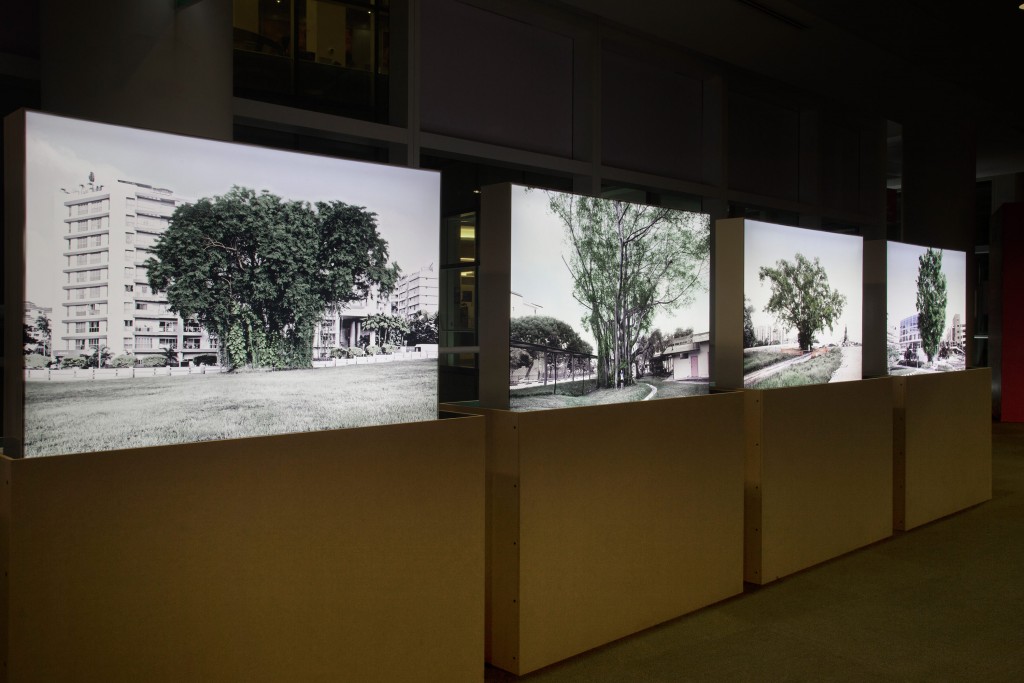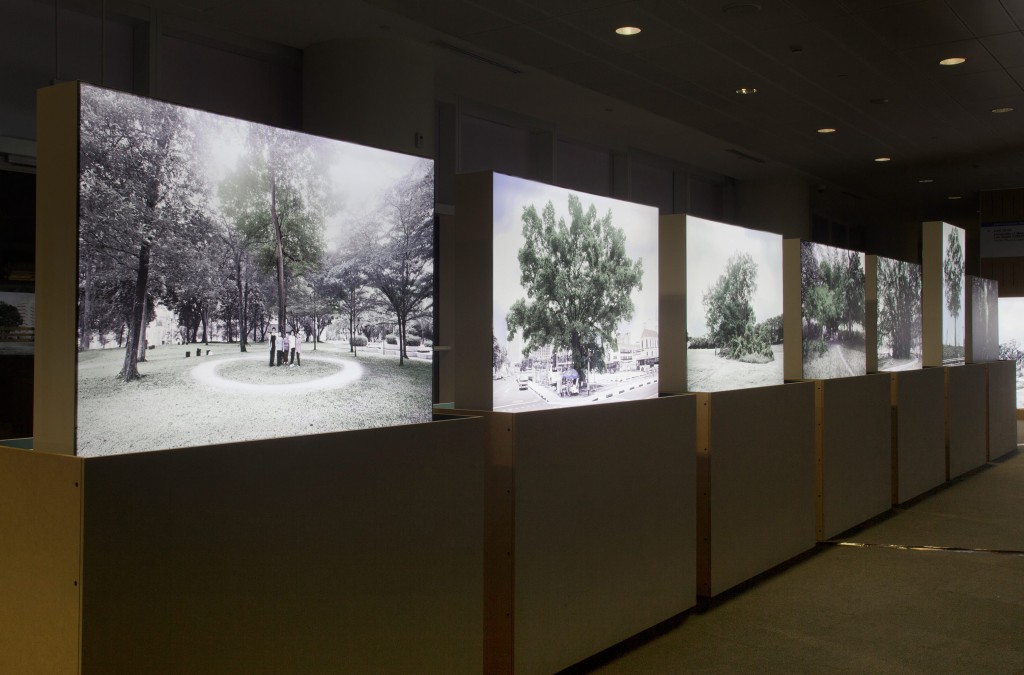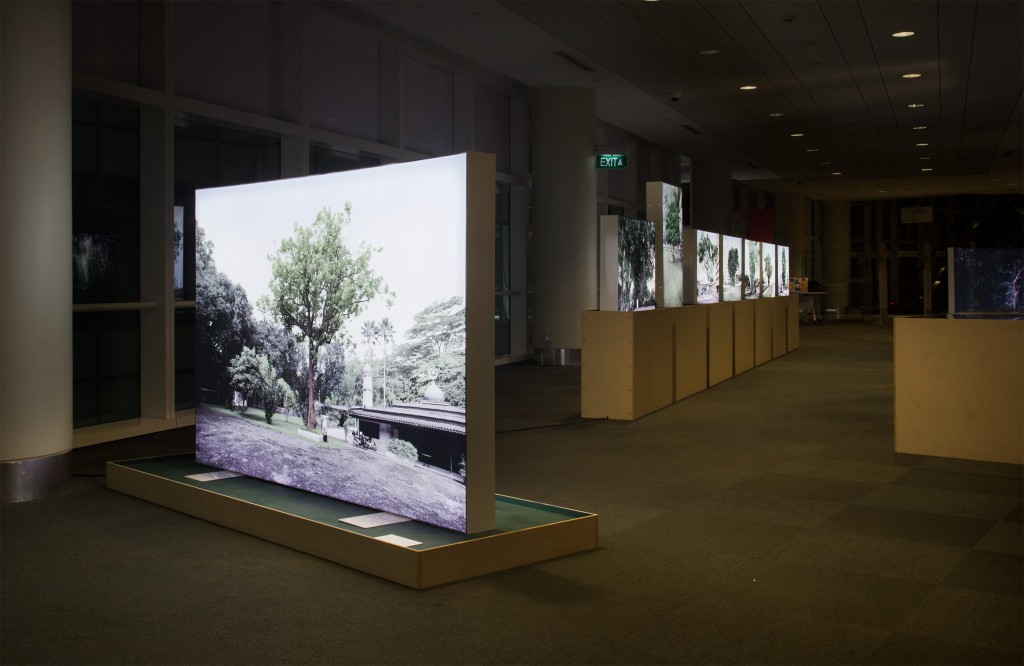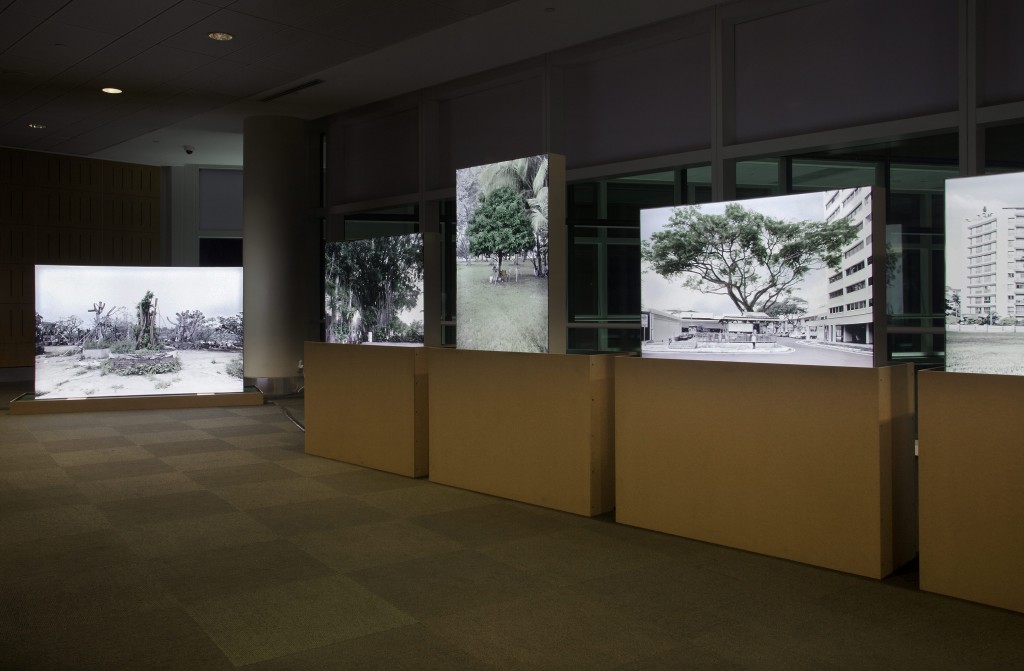National Library Singapore, Level 10. 1st May – 28th May. 10am – 9pm Daily
Book Launch and Artist Talk on 16th May, Saturday 2-4pm
Introduction
Singapore is often known as a Garden City, but this is an impersonal image of anonymous trees and gardeners. Our project aims to boil this generic image down to specifics by exploring the concrete, personal connections that Singaporeans have made with trees. After all, what is loving nature without loving the individual plant?
Through our interviews, we found that people relate to plants in touching and occasionally surprising ways. For example, a group of Buddhists have been circling a rubber tree for an hour a day, for the past few years, as a form of walking meditation and to absorb the tree’s “energy”. A mangosteen tree has been sheltering a man for 20 years, since he saved it from the bulldozers. Another woman cries when her trees don’t fruit.
Besides featuring in individual stories, trees are living, breathing markers of history. The trees in our collection are of different ages. Some are old native species from pre-colonial times, when Singapore was mostly a freshwater swamp forest; others are younger trees that their owners planted from seeds.
The images on show are influenced by vintage hand-tinted Singapore postcards. In fact, Singapore, very old tree is named after the title of one of the oldest postcards in the National Archive, a 1904 picture of an unspecified tree.
Some trees in our exhibition >
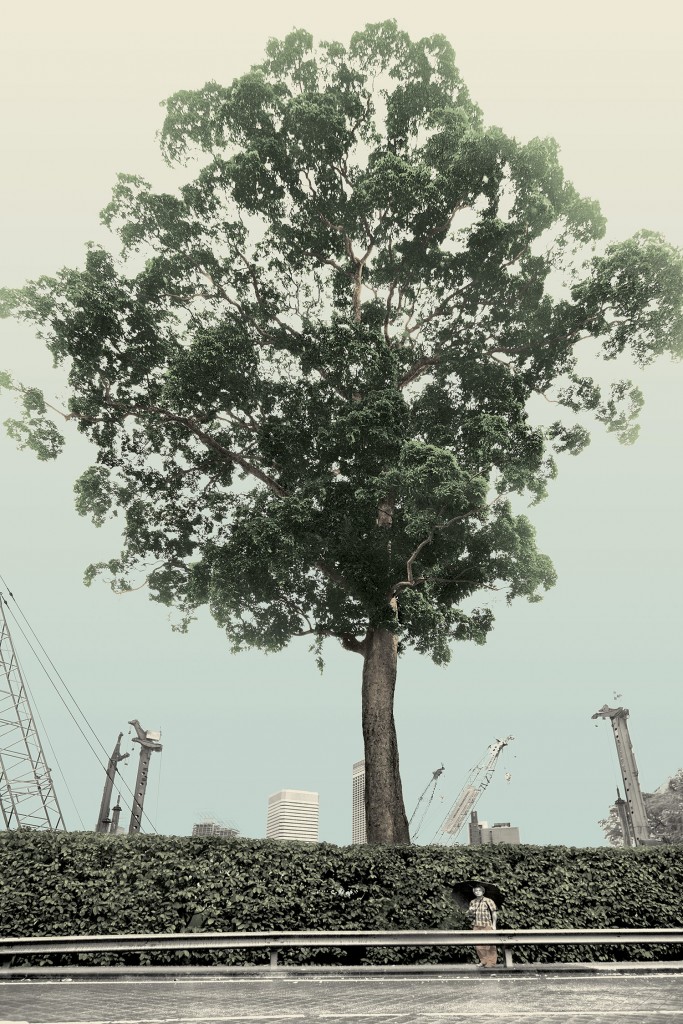

Mr O’Dempsey has been combing local nature reserves for the past few years in search of an endangered swamp species: Alstonia Pneumatophora. His favourite tree pictured here is estimated to be more than 100 years old. Its knee-like roots dip into the water and grow out up to 25 metres away from the trunk to breathe.
Over the last 20 years, Mr O’Dempsey has explored almost all the forests in Singapore and documents his discoveries on his personal webpage, Flora Singapura. He once found himself sinking waist-deep into a swamp before realising that it was probably better to take someone else along with him next time.

Durian Tree, Bukit Panjang
Teo Teah On, 66, carpenter
Deep in Bukit Panjang forest, there are about 100 durian trees left behind from a former kampung which was evacuated in the 1980s. Regular forager Mr Teo has been returning to this tree for the past seven years as it produces the sweetest fruit.
He believes that there are two generations of durian trees: The first being the original trees in the village, and the second being the new trees planted by former villagers to “earn” money from the government – a resident can get up to $110 for a durian tree of 3m on his land as compensation.
As for durian-picking, there are certain informal rules or etiquette. No one can lay claim to a tree: the fruit goes to those who come first. However, it is common for people to wait in two-hour slots. Some also wear safety helmets as they fear being injured by falling fruit.

Malayan Banyan, Kallang Basin
Every day for the past few years, retiree Mr Law rides his bike from Rangoon Road to rest under this tree. On a stone bench, he reads Chinese newspapers, snipping out articles and folding them into little squares after he is done. Sometimes he takes naps. He says he likes the peace and quiet.
He says he used to pass by the tree some 50 years ago when he was young, on his way to Gay World, where his aunt ran a stall selling tidbits and sweets.
Another regular visitor who goes by the name Mr Tan, says the place used to be called huo cheng, Chinese for fire city. He recalls that this used to be a kampung where people built boats, and the nearby Kallang River used to be very dirty before the park was set up.

Bodhi Tree, Bidadari Cemetery
Goh Si Guim, 52, perfusionist and nature lover
“This Bodhi tree is my favourite tree in the former Bidadari Cemetery. It was definitely there before I was born — its age is in excess of 50 years.
When I still had reservist in the 1990s and early 2000s, I used the Christian side of the cemetery to train for my IPPT runs. The open ground and the ups and downs of the place make good running ground. The slope on which this fig tree sits is the final leg of my run, so I will always pass by it to reach the top of the hill. On the hill, I’ll cool down, then sit down and shut my eyes.”

Malayan Banyan, Goodman Road
Jacquelyn Soo Mei An, 34, artist
This Malayan Banyan is a towering presence in Goodman Road, serving as an important landmark for various students over the years. This is because, just next to the tree is a building that has housed three different schools over the years: Tun Seri Lanang Secondary School (1962 to 1995), LASALLE College of the Arts (1992 to 2007), and School of the Arts (SOTA) (2007 to 2009). Now the building is known as the Goodman Arts Centre, housing the National Arts Council alongside artist studios.
In 2014, when there was news that trees, including the Malayan Banyan, were going to be cut down to make way for the widening of Goodman Road, artist Jacquelyn Soo stepped in with a petition to save the tree. She succeeded, and the tree was retained.

The Wedding Tree, Seletar Reservoir
Wong Yong Choon, 37, photographer
Dubbed the “Seletar Wedding Tree”, this bald casuarina is one of the most photographed trees in Singapore. Mr Wong, for one, has snapped more than 100 couples there. He remembers having to wait 30 minutes one weekend because there was a long line of couples queueing for a photograph.
Nearby, there is another tree that was probably planted at the same time, but it does not look as luxuriant. “The famous tree’s brother is dying,” Mr Wong jokes. “He must be jealous.”

“Energy” Rubber Tree, Ang Mo Kio Park
Low Yuit Ting, 60s, housewife (and friends)
If you happen to be at Ang Mo Kio Park at 6am, you may see a group of 20 people walking around a tree while holding their arms up. A well-trod path in the grass, in the form of a perfect circle, is evidence of their prolonged practice.
They are practising Ba Gua, a walking meditation. They believe that energy from the tree can be transferred to humans. In Singapore, groups of people meet in parks in Woodlands, Lakeside, Marine Parade and East Coast to practice.The Ang Mo Kio group, which includes working professionals, housewives, students, meet every morning from 6 to 7am.
Madam Low Yuit Ting says she has developed stronger legs and a more cheerful disposition after practising for three years. She used to practise alone, before the group was formed, and had attracted strange looks. She said that once, a little boy who saw her circling the tree joked aloud, “Auntie, you are going to push the tree down!”
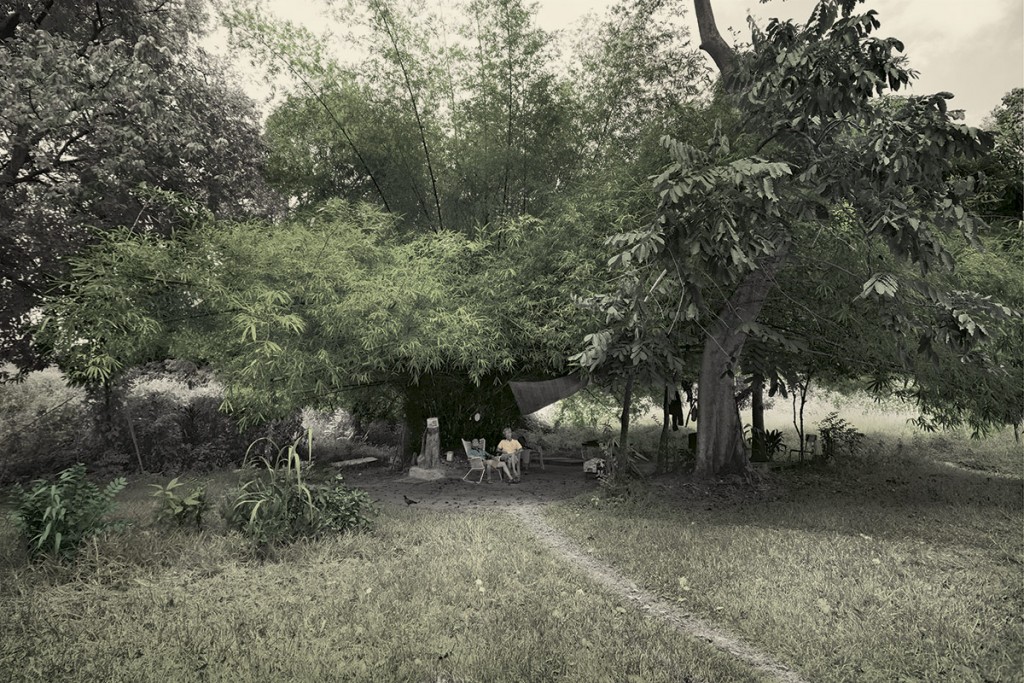
Bamboo Grove, Commonwealth Drive
Tan Nam Siong, 72, Chua Joo Hong, 70, both retired
This small bamboo grove behind Block 74 Commonwealth Drive used to be a popular spot for many nearby residents. It has been around for more than 15 years and stands beside what used to be a small Chinese temple along the KTM railway track. Only fragments of the temple’s floor tiles remain on site today.
Since the recent closure of a nearby car park, only two people continue to visit the grove, Mr Tan and Mr Chua. They prune the bamboo regularly to keep it from growing too wild, and have also grown papaya trees and sugar cane nearby. But most importantly, they come to visit their special friends: a family of squirrels that recognises them and responds to a whistle. Mr Tan spoils them sometimes with hand-picked durian from two nearby trees.
Exhibition View>



